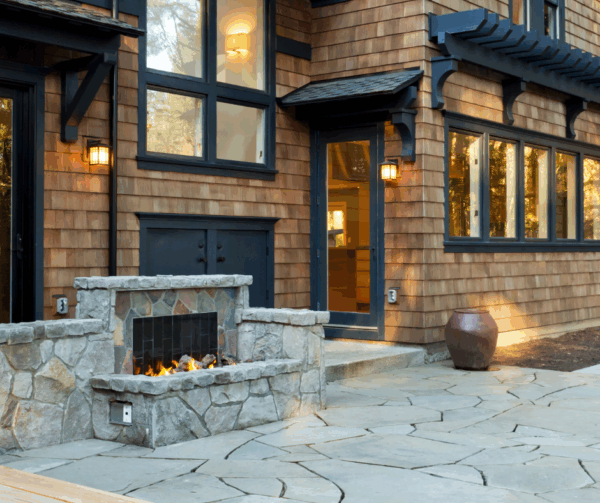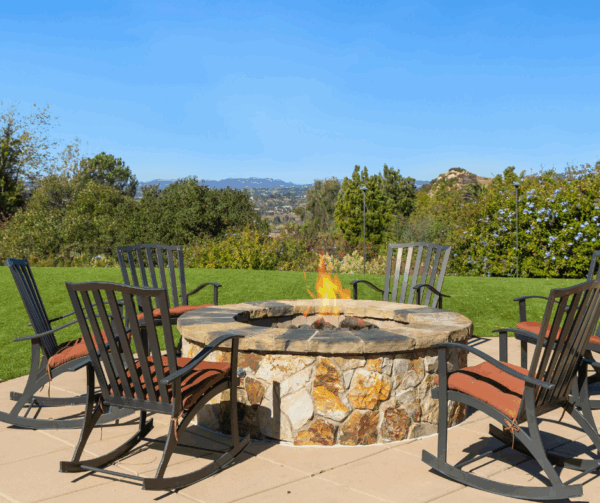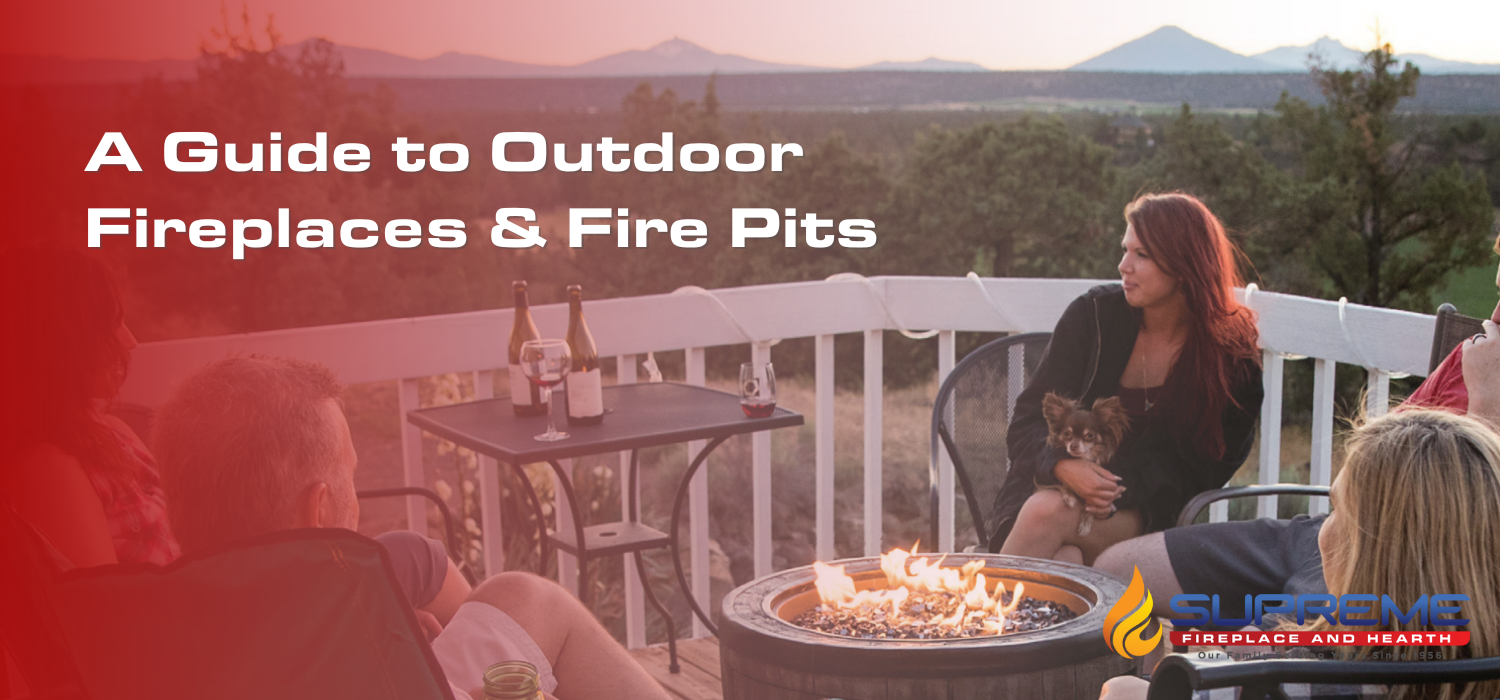Thinking about upgrading your outdoor space this summer? You might be wondering whether to go with an outdoor fireplace or a fire pit. There’s just something about gathering around the fire with friends and family that makes the night feel extra special, but with so many options how do you know which one’s the right fit for your backyard?
Outdoor Natural Gas Fireplaces and Fire Pits
Pros:
- Instant Warmth: Gas fireplaces light instantly, so no waiting around! You can enjoy warmth as soon as you hit the switch.
- Minimal Maintenance: No ashes, soot, or mess. Gas fireplaces stay clean and require less upkeep than their wood fireplaces.
- Convenience: Gas fireplaces stay on as long as there’s gas, so there’s no worrying about running out of wood. Plus, turning them off is as easy as pressing a button.
Cons:
- Installation Costs: Installation tends to be pricier because it may require running a gas line to your desired spot.
- Lack of Ambiance: While convenient, gas fireplaces lack that iconic wood-burning crackle and the distinct smell of a summertime fire.

Outdoor Propane Fireplaces and Fire Pits
Pros:
- Portability: Propane fireplaces are perfect if you like flexibility. You can move them around as needed since they don’t require permanent installation.
- Aesthetics: The propane tank is typically easy to hide, so your outdoor space can remain neat and tidy.
- No Mess: No wood or ash means easy cleanup, and there's no smoke to deal with.
Cons:
- Ongoing Costs: Propane tanks will need to be refilled, and while it’s convenient, it can get pricey.
- Limited Burn Time: Once the propane runs out, your fire ends, so you'll need to stay on top of your tank levels.

Outdoor Wood Burning Fireplaces and Fire Pits
Pros:
- Ambiance: If you’re in it for the classic fireplace feel, nothing beats a wood-burning fire.
- Non-Electric: These fireplaces will keep burning even if you lose power.
- Choice of Wood: You can experiment with different types of wood, each offering unique burning times and scents.
Cons:
- Wood Storage: You’ll need to store firewood in a dry place, which requires some planning and space.
- Higher Maintenance: Unlike gas or propane, wood-burning fireplaces require regular cleaning of ash and soot.

No Matter What Fireplace You Choose, Supreme Fireplace & Hearth Has Your Back!
At Supreme Fireplace & Hearth, we’re here to help guide you through the process of selecting the perfect fireplace for your outdoor space. Our team can design and install a custom solution that fits your style, budget, and needs.
If you're not sure where to start, come visit our showroom to see our models in person, or reach out to us to chat more about your options.


